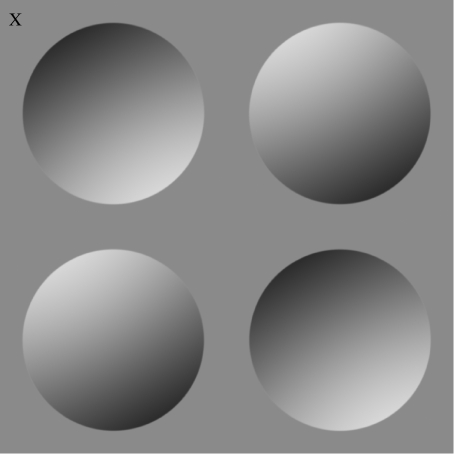Figure 1.
Typical stimulus presented to an observer on a single trial. The observer's task is to indicate whether or not the quadrant marked with a cross (×) appears convex or concave. This response implicitly defines the perceived direction of the light source. For example, if the marked quadrant is perceived as convex, then this implies that the light originates from the lower right (i.e. approx. 300°), but if it is perceived as concave, then this implies that the light originates from the upper left (i.e. approx. 120°).

